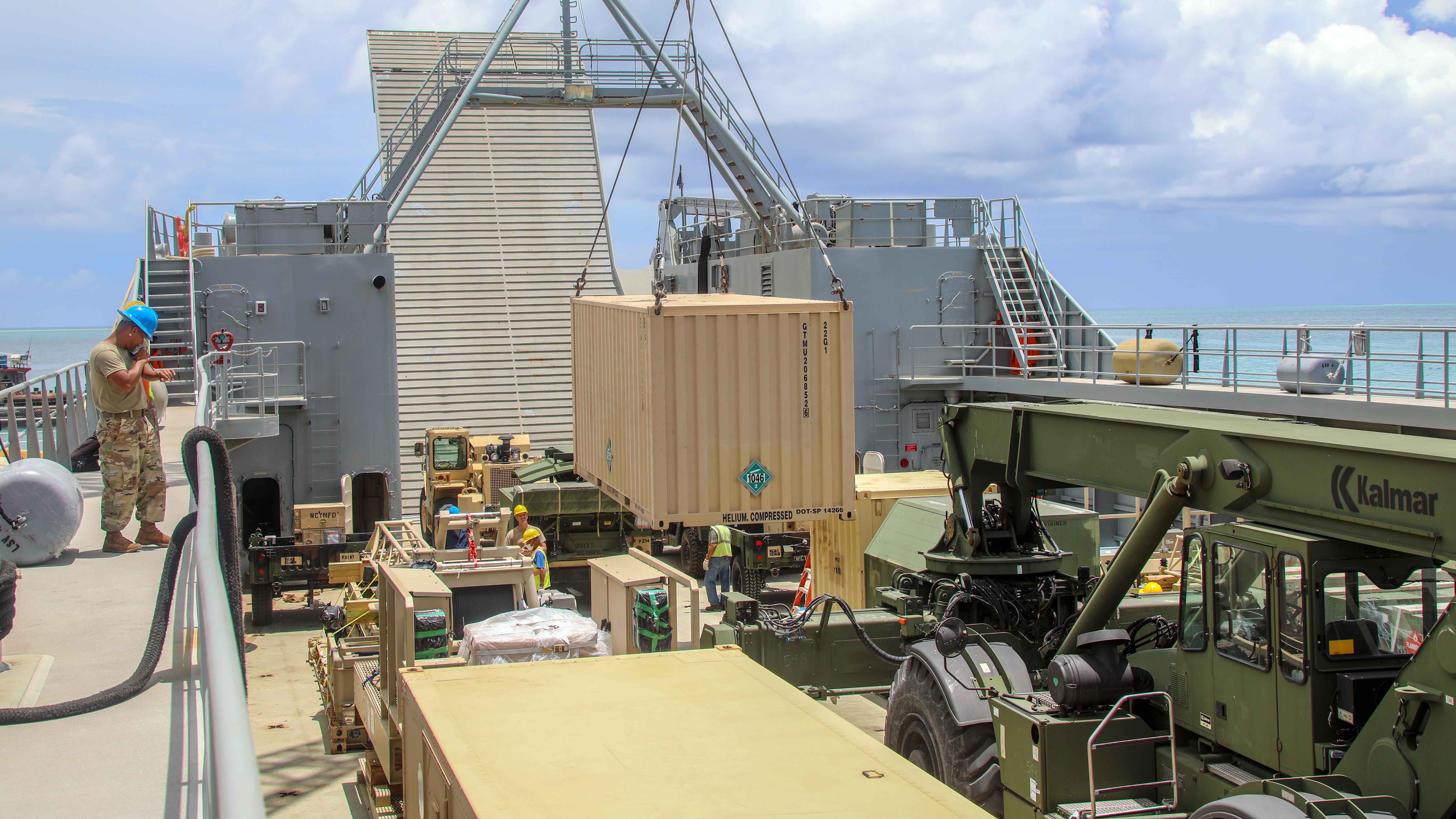Pre-Positioned Stocks Crucial in Indo-Pacific
Pre-Positioned Stocks Crucial in Indo-Pacific

Expansion of the Army’s pre-positioned stocks in the Indo-Pacific is essential to joint operations in that vast and challenging theater, two senior Army leaders said.
While the Army has some sets of equipment afloat on leased vessels in the Pacific, work is underway to expand the amount of materiel that can be stored on land in countries like Australia, the Philippines and other locations in Southeast Asia, Douglas Bush, assistant secretary of the Army for acquisition, logistics and technology, said April 18 during a Senate Armed Services airland subcommittee hearing.
Calling pre-positioned stocks a “vital capability” that the Army is committed to maintaining, Bush said that “expansion of [Army pre-positioned stocks on land] beyond where it is today heavily relies on the work of the State Department and others on getting access to these countries so we can build the locations.”
Whether the equipment is afloat or on land, it will be vulnerable to attack, said Gen. James Rainey, commander of Army Futures Command, who noted that air and missile defense is “never going to be a total solution.”
“We’re never going to be able to put anything in range [of a potential attack] and assume it’s going to stay safe unless we fight to keep it safe, so it’s a balancing act,” Rainey told the panel. Wherever that equipment is placed, “you better be able to protect it, and we’re pursuing those efforts,” Rainey said.
The Army’s role in the Indo-Pacific theater, Rainey said, will be part of the capabilities that the entire joint force brings to bear, including several enabling responsibilities such as command and control, protection and sustained logistics.
In addition to providing those capabilities, the Army will be vital if deterrence turns to conflict.
“If we do transition to conflict, we're going to have to be able to take land away from the enemy, and if they defend it, that means taking it the old-fashioned way by killing them and securing it and protecting the joint force,” Rainey said. “So, there's absolutely a role for our Army and every other service in what would be a horrific war.”
The challenges confronting the Army in the Indo-Pacific will be among the topics discussed May 16–18 at the Association of the U.S. Army’s LANPAC Symposium and Exposition. The theme for this year’s event at the Sheraton Waikiki in Honolulu is “Emerging Changes to Warfare.”
For more information or to register, click here.

